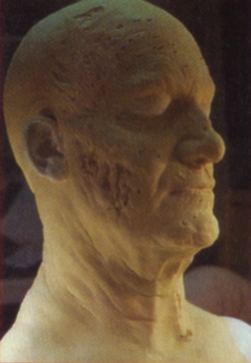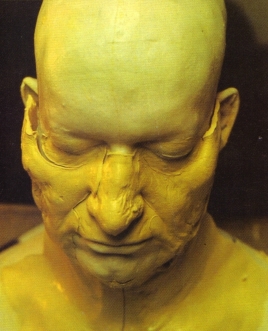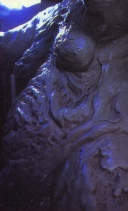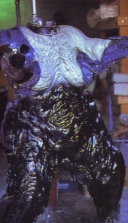 |
The rough head sculpture, done in white plastilina. Ted's
Hydrocal head cast receives three coats of Alcote dental separator. After
drying the Alcote, the plastilina is sculpted onto the cast. |
| The whole head soaks in a tub of water overnight, which
reactivates the Alcote into a slippery film, loosening the clay. I slice the
clay where I want the appliances to overlap. Here the chin, forehead and rear
skull have been removed and placed on the section molds. |
 |
 |
Henrietta's bloated plastilina body is done. In
preparation for the fiberglass mold, we spray the clay with clear acrylic and
several coats of PVA (a standard release for fiberglass). |
| Black gel-coat resin is used for the first layer. The
color makes troublesome bubbles easier to spot. I brought in fiberglass expert
Don (Cocoon) Pennington for the job, and he fabricated a pristine mold.
|
 |